In the App Store, where things change by day and year-over-year forecasts are near impossible to make with any kind of accuracy (and see above for our hesitations when it comes to gambling), realizing that seasonality in its many forms is going on can be all you need.
A/B Testing Seasonality in ASO refers to the constant changes of app store traffic seen throughout different seasons.
Having a better understanding of seasonality can help you plan your ASO strategy during these periods (e.g.
returning to school, the holiday, or summer) so that not only are people searching more for apps at this time and or downloading them too.
The importance of basing your ASO strategy on these seasonal peaks is twofold: you guarantee that users see and can download your app when it matters, but also make sure to allocate resources appropriately.
In this post, we will highlight all of the core lessons to learn about App Store seasonality and how you can time your ASO activity right for seasonal impact.
- Key Concepts and Trends in App Store Seasonality
- When to Launch Your ASO Strategy for Seasonal Success
- Historical Data to Forecast Seasonality
- Getting the Most Out of Seasonal Peaks
- How To Guard Against Seasonal Fluctuations In Your ASO Strategy
- Bottom Line: Harnessing App Store Seasonality for Optimal ASO Success
- App Store Seasonality and ASO FAQ
Key Concepts and Trends in App Store Seasonality
Seasonality in the App Store is no longer just a buzzword; it’s one of those key time-dependent factors that can determine your app success.
With a grasp on the key concepts and trends of App Store seasonality, you can maintain an informed strategy to place your app at prime focus time for maximum user downloads.
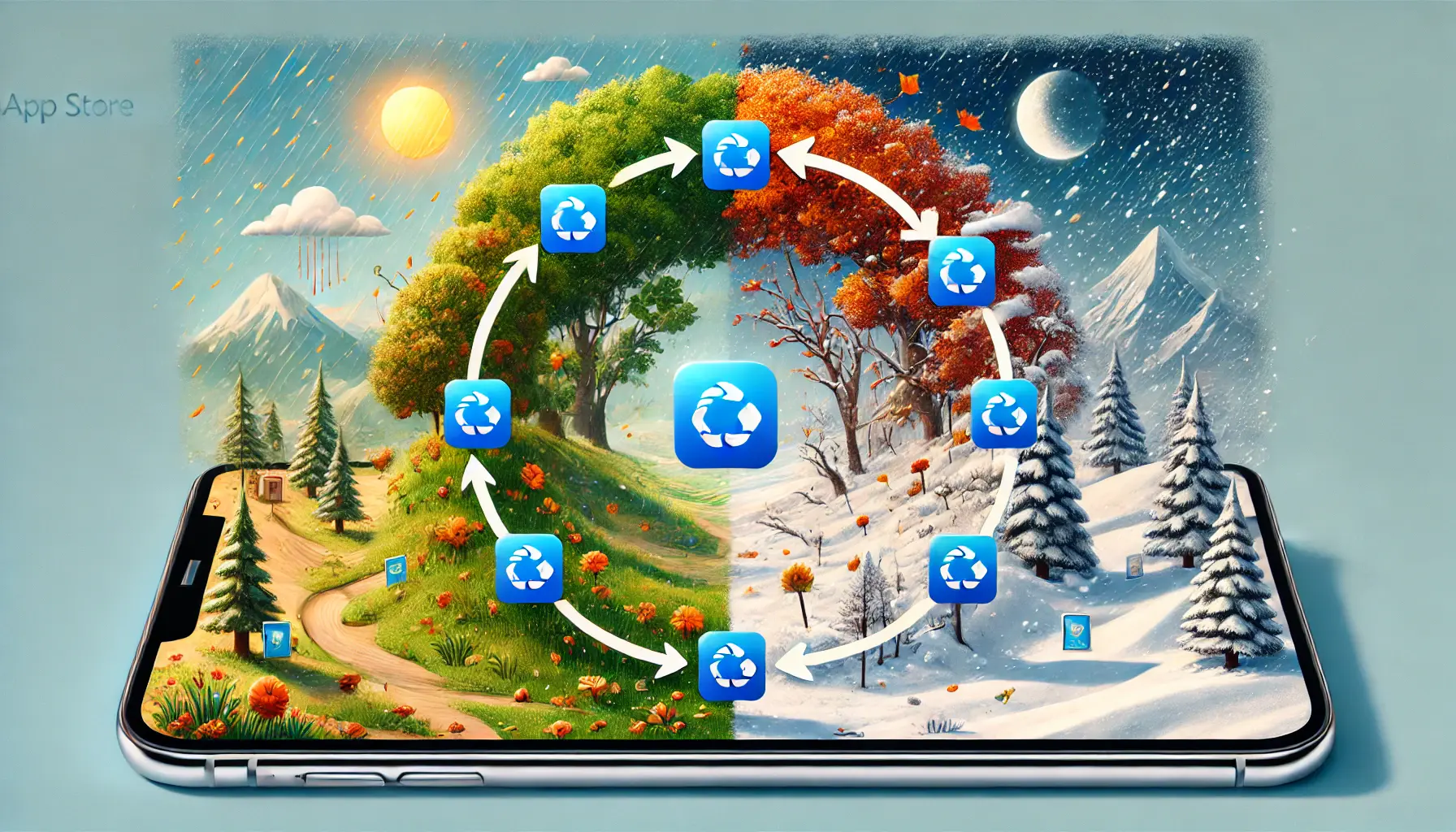
Illustration of how seasonal changes impact app performance in the App Store.
What do we mean by ‘seasonal’ in the App Store?
The boom and bust cycles in app store activity, based on the time of year are known as seasonality.
This shift may be due to a multitude of factors including holidays, schools in session, or other large events such as product launches and football/hockey games.
By knowing these seasonal trends, you can predict when will be the highest and lowest amounts of traffic, this way adjusting your ASO strategy accordingly.

Visual representation of identifying seasonal highs and lows in App Store performance.
Identifying Seasonal Highs and Lows
Before you think about using seasonality for ASO, the first step is to try and work out what peaks or troughs relate well to your app category.
Fitness apps may experience heightened download rates in January as people establish New Year’s resolutions, and travel booking applications will see use surges during the summer.
Once you’ve got those spikes locked down, then center your ASO efforts around hitting the right keywords and content during these seasonal periods.

Visual representation of ASO performance and its relationship with seasonality in the App Store.
ASO Performance and Seasonality
The influence of the seasons on your App Store Optimization (ASO) performance is undeniable.
During popular times of the year, there is a lot to fight over for those rewards as well.
Conversely, off-peak season developer training, unlikely to be of general interest.
When you tie up your ASO strategy with these seasonal trends, it leads to better visibility for the app, more downloads, and eventually higher revenue as well.
- Takeaway: It is important to continuously review your application performance data looking for patterns and trends that may follow seasonality. This will keep you one step ahead of your competition and make sure that your app is ready for those waves of peak periods.
- Pro tip: Use seasonal keywords in your metadata to catch some of those extra searches at the time with peak volume.
- Pro tip: Don’t forget to get your app visuals and descriptions all set up for the seasonal theme you have chosen, as this can increase engagement and conversion rates.
Understanding App Store seasonality is crucial for timing your ASO efforts effectively.
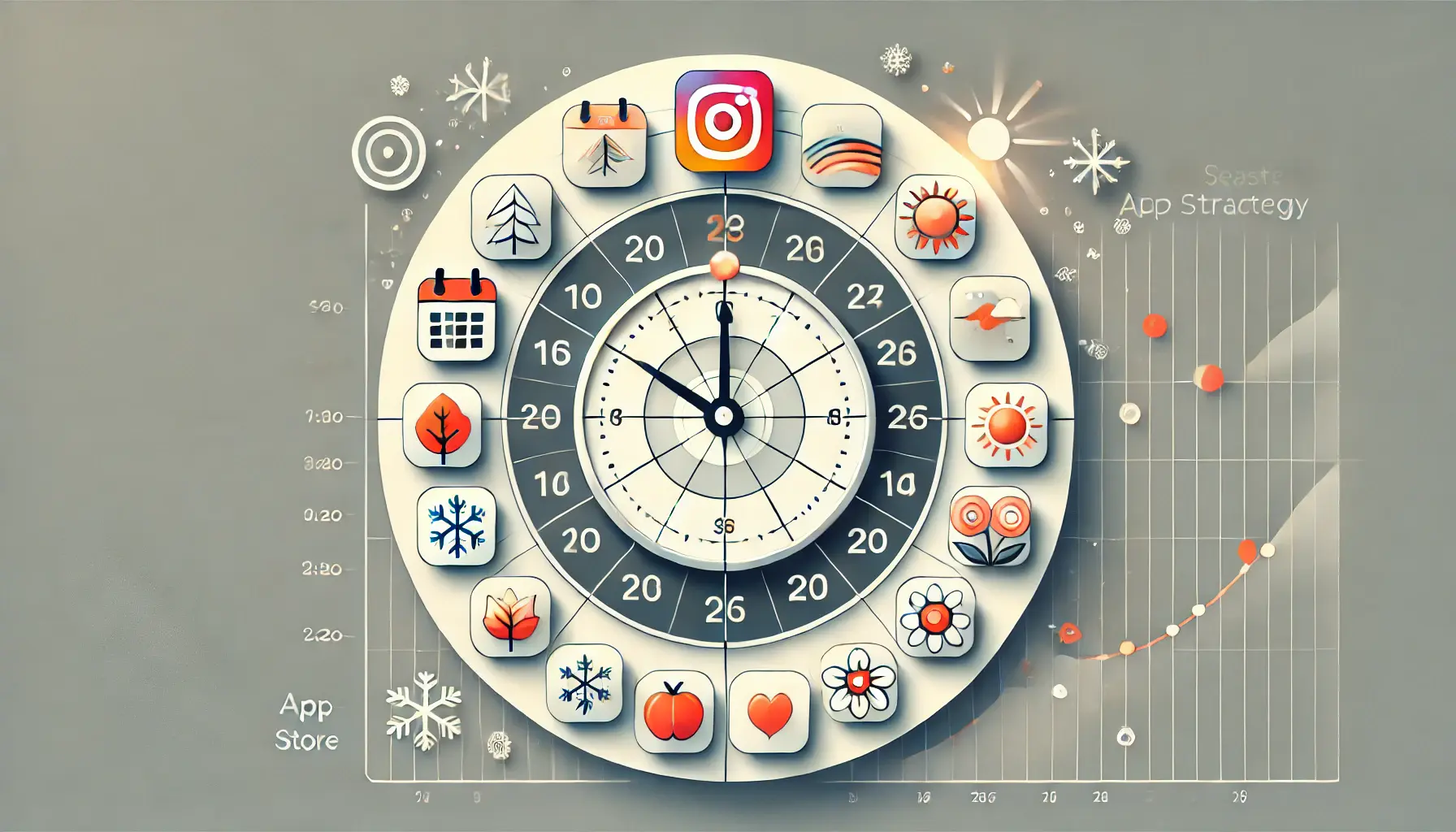
Illustration of timing an ASO strategy for maximum seasonal success in the App Store.
When to Launch Your ASO Strategy for Seasonal Success
Properly timing your App Store Optimization (ASO)—particularly if you are looking to take advantage of seasonality—is everything.
By tailoring your ASO strategy to the right season, you can get more users and downloads exactly at the appropriate time.
Now, the thing is, how will you time your ASO for different seasons to get that seasonal success?
That is exactly what we are going to find out in this section, some of the best practices with which you can get your ASO basics right but timed according to seasonal influences as well.

Illustration of aligning ASO strategies with seasonal trends in the App Store.
ASO Strategies Aligned to Seasonal Trends
If you want to time your ASO, the first thing to consider is seasonal trends.
Notice when your ideal users are probably searching for and downloading apps like yours.
For example, a shopping app will enjoy more searches during the holiday season, while sports and fitness apps might see increased searches at New Year.
The key to aligning your ASO efforts with these trends is:
- Search Trends Analysis: Find out when certain keywords related to your app see a spike in search volumes using tools like Google Trends or even App Store analytics.
- Optimize Early: Begin optimizing your app’s metadata and visuals at least a few weeks before the expected seasonal peak to ensure it’s ready when traffic starts to increase.
- Watch Competitors: Keep an eye on your competitors during regular peaks. Have they revised their app descriptions, imagery, or keywords? This can help you stay ahead of your competitors.
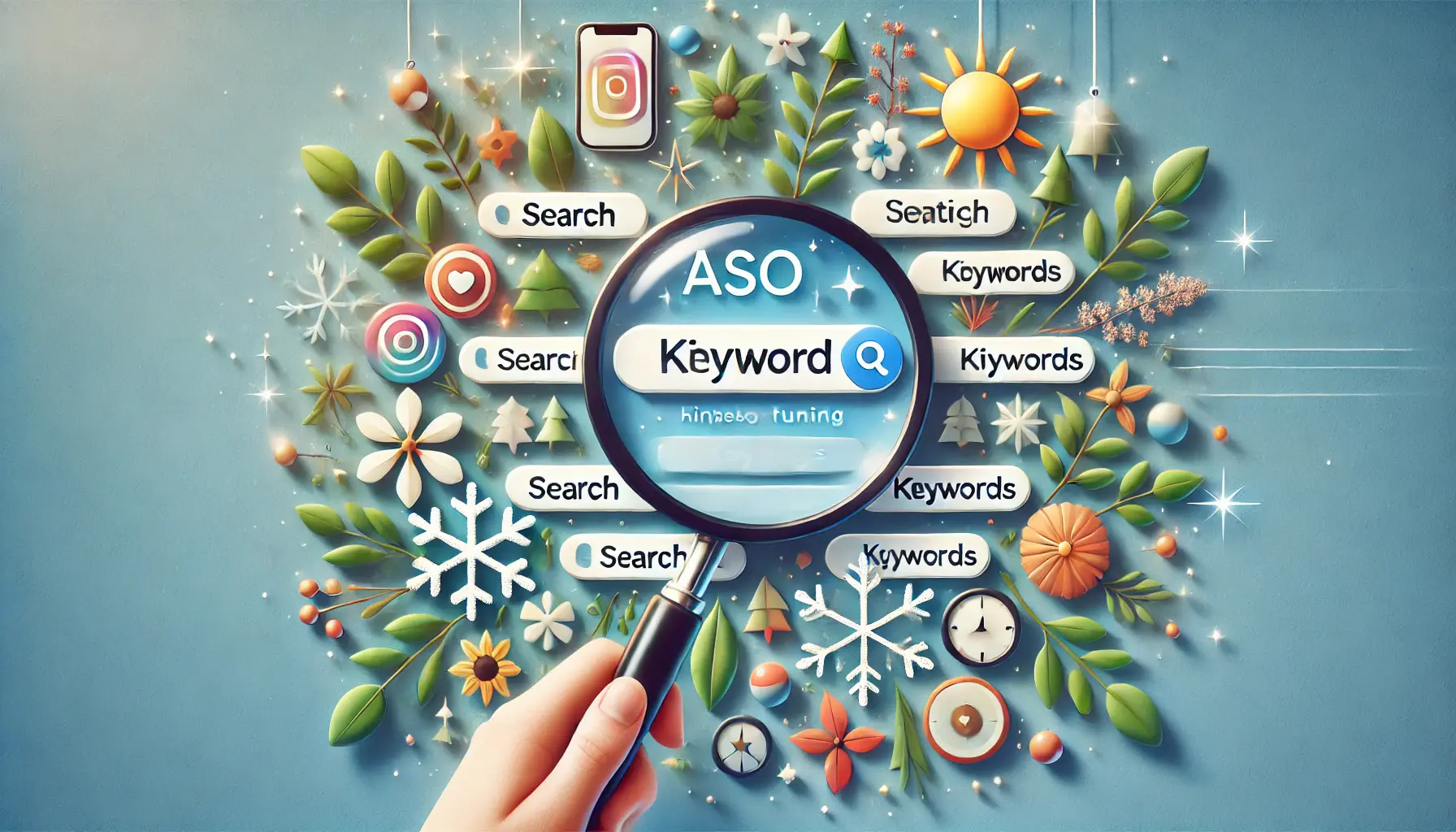
Illustration of fine-tuning keyword strategies in ASO for peak seasonal success.
Fine-Tuning Your Keyword Strategies for Peak Season
Keywords are extremely important in ASO, and tweaking your keyword strategy for the holiday season can have a huge impact on how much visibility your app gets.
Of course, as with high-traffic days for last-minute offers, the competition may be even more fierce on certain keywords.
Just be smart about your approach to avoid wasting resources at peak times!
In peak seasons, you can make some changes to your keyword strategy:
- Target High-Volume Keywords: Find those high-volume keywords that are specific to your seasonal trends and focus on them. For instance, terms like “gifts” or “shopping” during the holiday season.
- Employ Long-Tail Keywords: Instead of the basic “car insurance,” go for long-tail keywords that are less competitive and more specific to answering a particular question your audience may have. For example, instead of targeting the keyword “fitness app,” consider focusing on “fitness app for beginners” during New Year’s when everyone has resolutions.
- Refresh Keywords Regularly: The effectiveness of some keywords can quickly change in and out of peak moments. Be sure to go back and update your keyword list regularly as well.
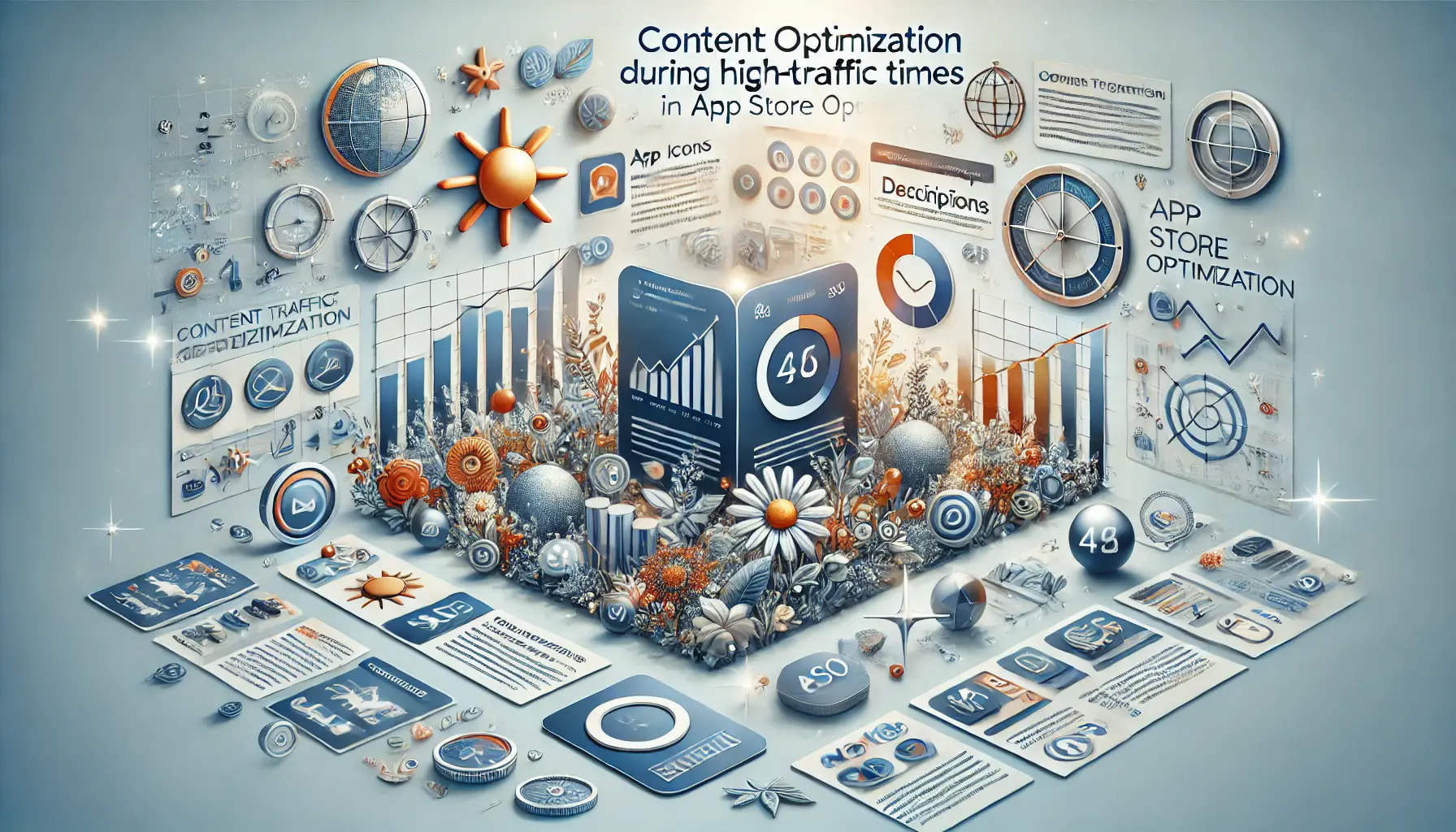
Illustration of content optimization during high-traffic periods in ASO.
Content Optimization in High-Traffic Times
Another element of timing your ASO strategy is optimizing content in the app while traffic is at its peak.
When user activity is at its maximum, you need to rank well and look attractive not just in search results but also on the app’s page.
Here are strategies to optimize content for peak seasons:
- Update App Descriptions: Update app descriptions to highlight features and benefits that are most significant during the seasonal peak. For instance, a travel app could suggest winter getaway deals around the holiday season.
- Update Graphics: Change app screenshots, icons, and videos to match the current seasonal theme. This can help you establish a better connection with users, leading to higher download rates as well.
- Trusted by Users: Good user reviews and ratings could help improve your conversion rate, especially during peak times. Download rates can be boosted by having happy users review your app—make note of those in the description.
Adapting your product descriptions and in-app content around seasonal events can make a world of difference when it comes to ensuring your app is discovered during peak times.
Keep in mind, the idea is to get your app found and, very importantly, at a time when users are likely to want to use it.
Proper timing of your ASO strategy can significantly impact app visibility and downloads.
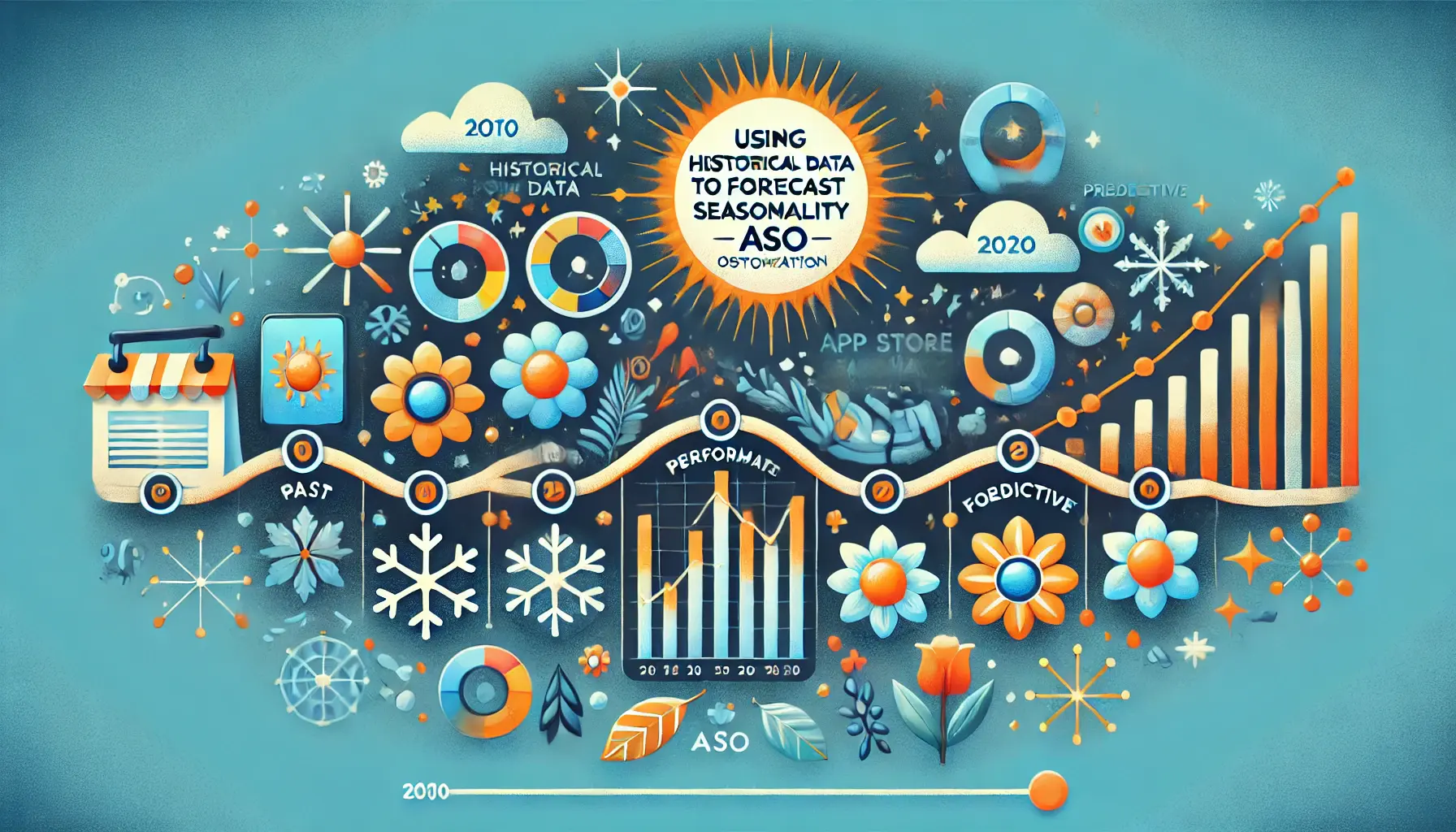
Illustration of using historical data to forecast seasonality in ASO.
Historical Data to Forecast Seasonality
Historical data remains one of the most effective ways to take advantage of seasonality in the App Store.
Knowing how high the seasonal peaks could be by looking back and predicting where we will hit those valleys makes it easier to plan your ASO actions strategically.
Here, you will find a section explaining how to use historical data for forecasting seasonal trends in your app.

Illustration of using app analytics to gain season-based insights in ASO.
App Analytics: Used for Season-based Insights
App analytics provide you with crucial information on how your app has performed across the year.
By digging deeper into the trends, you will see that they closely relate to some type of seasonal pattern.
This way, you can plan your ASO strategy much earlier ahead of known seasonal peaks.
- Review Past Performance: Begin by reviewing the performance data for your app in previous years. Identify where there might be seasonality or events in user acquisition, engagement, and/or retention.
- Choose Important Metrics: Concentrate on downloads, active users, and in-app purchases as the most important metrics. This knowledge will give you the best indication of the time when your app is mostly in trend.
- Apply Predictive Analytics: Some of the more advanced analytics tools in the market have built-in or integrated modules for predictive analysis, which will help you estimate further knowledge on next seasonally trending products. Use these tools to gain a competitive edge.

Illustration of user behavioral patterns in ASO, highlighting how user engagement changes over time and with seasonal trends.
User Behavioral Patterns
Predicting seasonal trends also depends on understanding user behavior.
When considering annual trends, it helps to use this as a guideline for your global ASO strategy.
- Segment Your Userbase: Divide your user base by demographic attributes, location, or usage patterns. This will give you an idea of which segments are more active at different points in the year.
- Monitor In-App Activity: Observe what features of your app users interact with during various seasons. Are there features in demand during seasonal peaks?
- Testimonials and Reviews: Through feedback provided by users or reviews posted on popular platforms, you can gain insight into how your app is perceived during different seasons. During peak times, listen for common threads or requests.

Illustration of predicting trends in ASO through competitor analysis, considering seasonal changes.
Predicting Trends with Competitor Analysis
Another handy way to predict seasonal trends is competitor analysis.
Watching how other apps similar to yours change their ASO strategies throughout the year—what works and what doesn’t—can inform your actions more effectively.
- Look at What Your Competition is Doing: Track competitor activity updates for their app store listings, including seasonal keywords and messaging changes. They may give you hints on tactics being used to capitalize on seasonality.
- Competitor Performance Analysis: Track the performance of app competitors over time using tools like App Annie or Sensor Tower. Look for data broken out by season and seek specific periods when there are spikes in downloads or rankings.
- Review the Successes and Failures of Others: Look at what your competitors are getting right during their peak season, and learn as much as you can from any blunders. Take these lessons and apply them to your seasonal ASO strategy.
The ability to predict seasonal trends in the App Store involves examining historical data, understanding user behavior, and analyzing what your competitors are doing.
This approach will keep you ahead of the competition and ensure that your app is set up for success during its moments under the spotlight.
Leveraging historical data allows for better forecasting of seasonal trends.
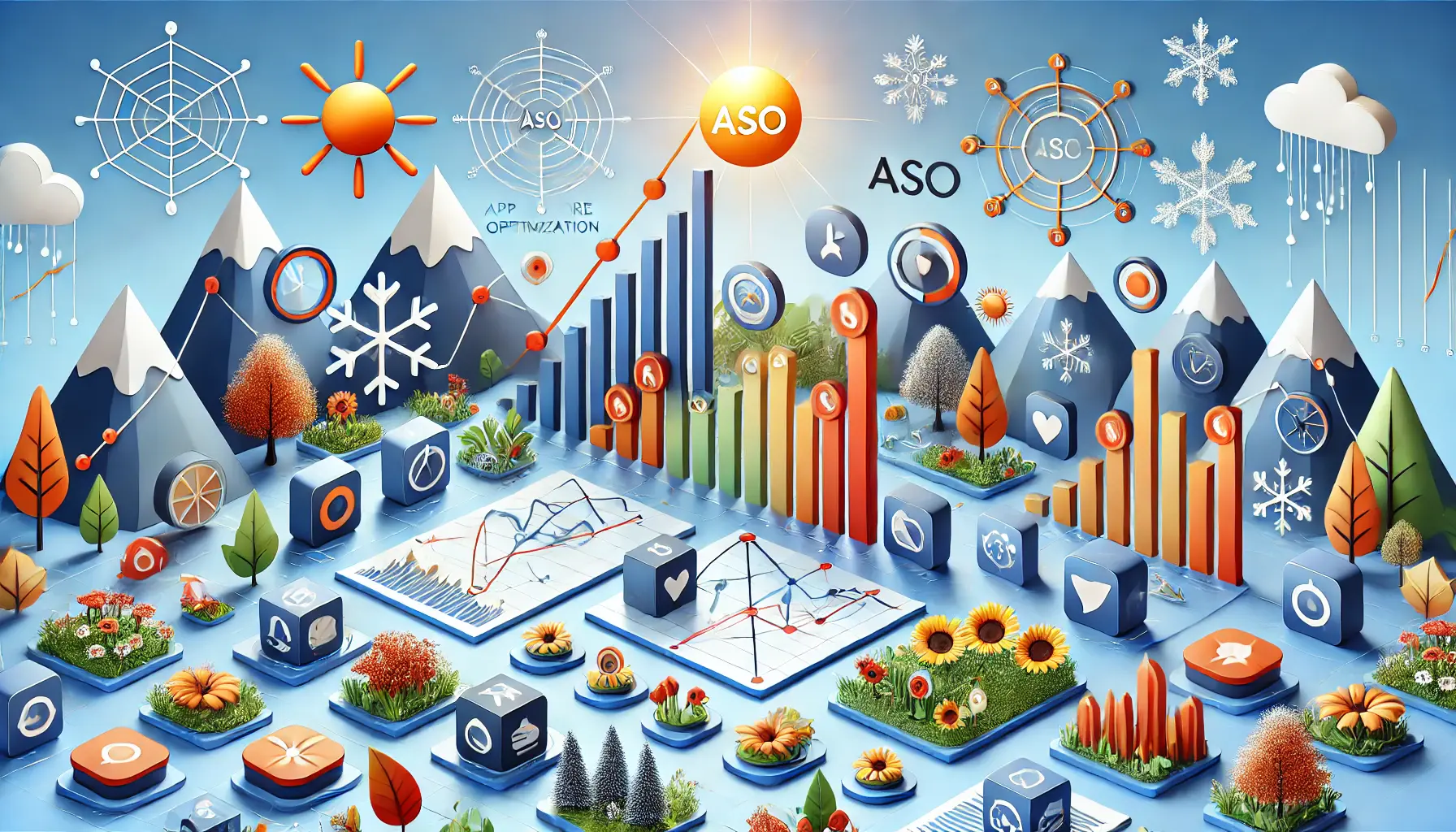
Illustration of maximizing app performance during seasonal peaks in ASO.
Getting the Most Out of Seasonal Peaks
After you have learned how seasonal changes impact your app, it is important for you to know what to do with that information so that maximal visibility can be gained through those essential seasonal peaks.
Getting your app to rise above the competition when people are actively searching can significantly boost downloads and engagement.
In this section, we will cover strategies that you can implement to maximize the visibility and acquisition for your app during these peak moments.

Illustration of optimizing App Store listings to handle high traffic in ASO.
How To Optimize App Store Listings for Ton of Traffic?
During the time of maximum traffic, your app store listing is the initial interaction with potential users.
Therefore, it is critical to create an immediate impact that will convince a user right away why they should download your app.
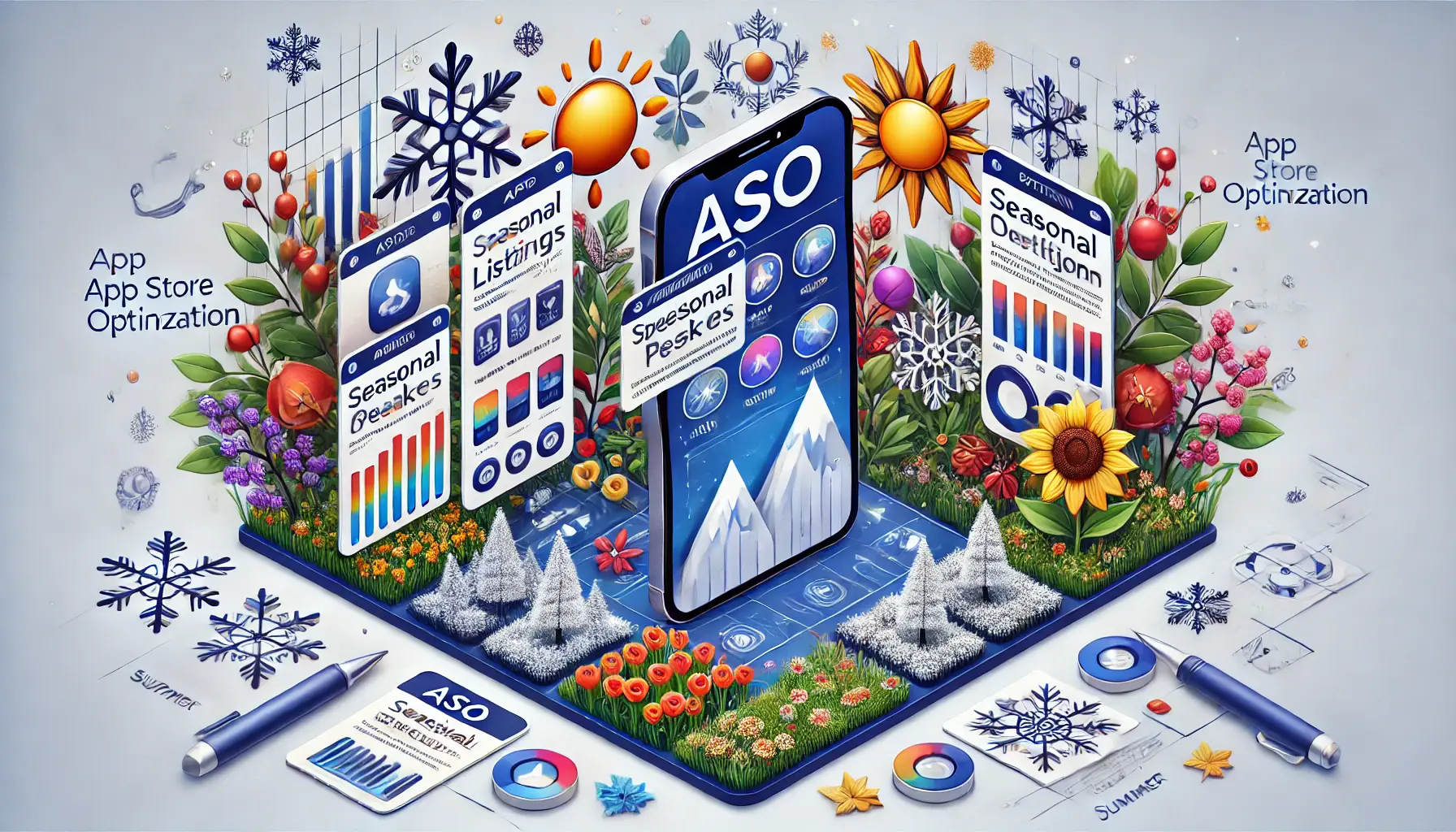
Illustration of optimizing App Store listings for seasonal peaks in ASO.
How to Optimize Your App Store Listing for Seasonal Peaks
- Refresh Seasonal Visuals: Update your app’s screenshots, icons, and promotional videos with a seasonal theme. Whether it’s the holiday season or summer, your app should reflect the current vibe.
- Show Off Your Seasonal Features: If you have seasonal features to offer in the app, make sure these are visible in the app description and visual assets. For example, during the winter months, a shopping app might highlight its holiday gift guides.
- Use Seasonal Keywords: Incorporate seasonal keywords in your app title, subtitle, and keyword field list to achieve higher rankings. This makes your app more searchable when users are looking for apps relevant to the season.

Illustration of engaging users with promotional campaigns aligned with seasonal trends in ASO.
Promotional Campaigns and Seasonal Engagement
Seasonal peaks are the perfect time to go all in with engaging your users and boosting app visibility.
During these times, consider running seasonal promotions or campaigns that connect with the audience you are appealing to.
- Run Limited-Time Offers: Provide special offers or discounts that are only available during the season. Limited-time offers create a sense of urgency and encourage users to download your app or engage with its features.
- Seasonal Content Updates: Just like fashion or social trends, content changes based on the season. For example, a fitness app could run an exclusive deal on their New Year workout challenge, or a game could release Christmas-themed levels.
- Push Notifications: Make use of push notifications to remind users about seasonal features, promotions, or the latest content they’re most likely interested in. Notifications are ideal for re-engaging inactive users and increasing usage during peak periods.
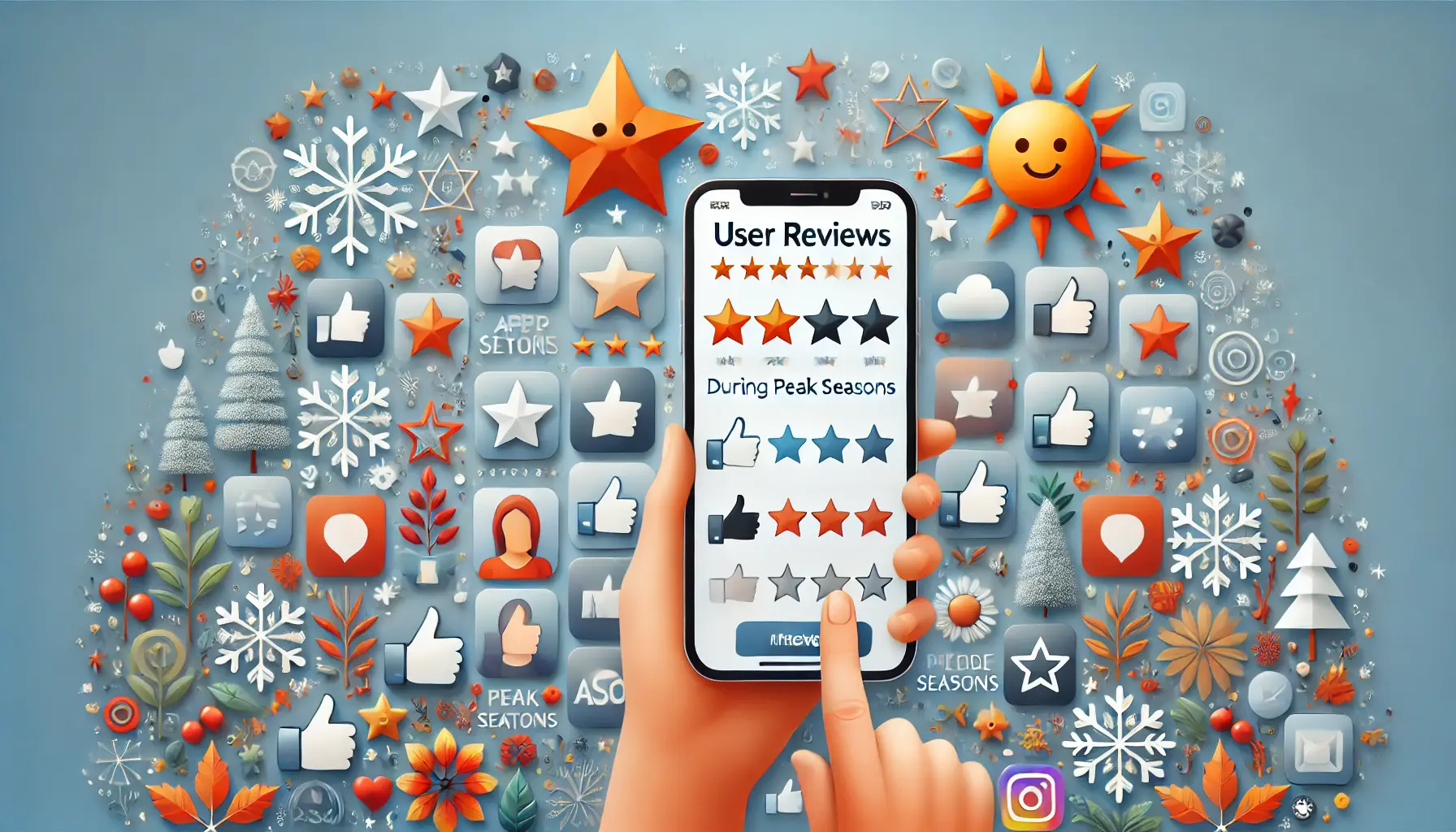
Illustration of leveraging user reviews and ratings to boost app visibility during peak seasons in ASO.
Using User Reviews and Ratings During Peak Seasons
User reviews and ratings are crucial factors that compel potential users to download your app, particularly during seasonal peaks.
High traffic times are the best opportunity to collect positive reviews and ratings because they help improve the credibility of your app.
- Promote Good Reviews: Ask happy users to write positive reviews, especially after launching a seasonal update or promotion. Highlight these reviews in your app description to build trust among new users.
- Answering Reviews: Interact with users by responding to their reviews, solving problems, and thanking them for their feedback—whether it’s positive or constructive criticism. This way, you demonstrate that user opinions are important to you, which can enhance your app’s trustworthiness during seasonal peaks.
- Feature App Ratings: When your app has received strong ratings, be sure to tout this feature on your app store page. High ratings can convince users to choose your app over a competitor, especially during peak times when many people are making decisions based on ratings.
Increasing visibility during seasonal peaks partly lies in optimizing your app store listing and running targeted promotions, supported by positive user reviews.
By implementing these strategies effectively, you can make your app stand out when user intent is at its highest, leading to increased downloads and engagement.
Maximizing visibility during seasonal peaks is essential for app success.
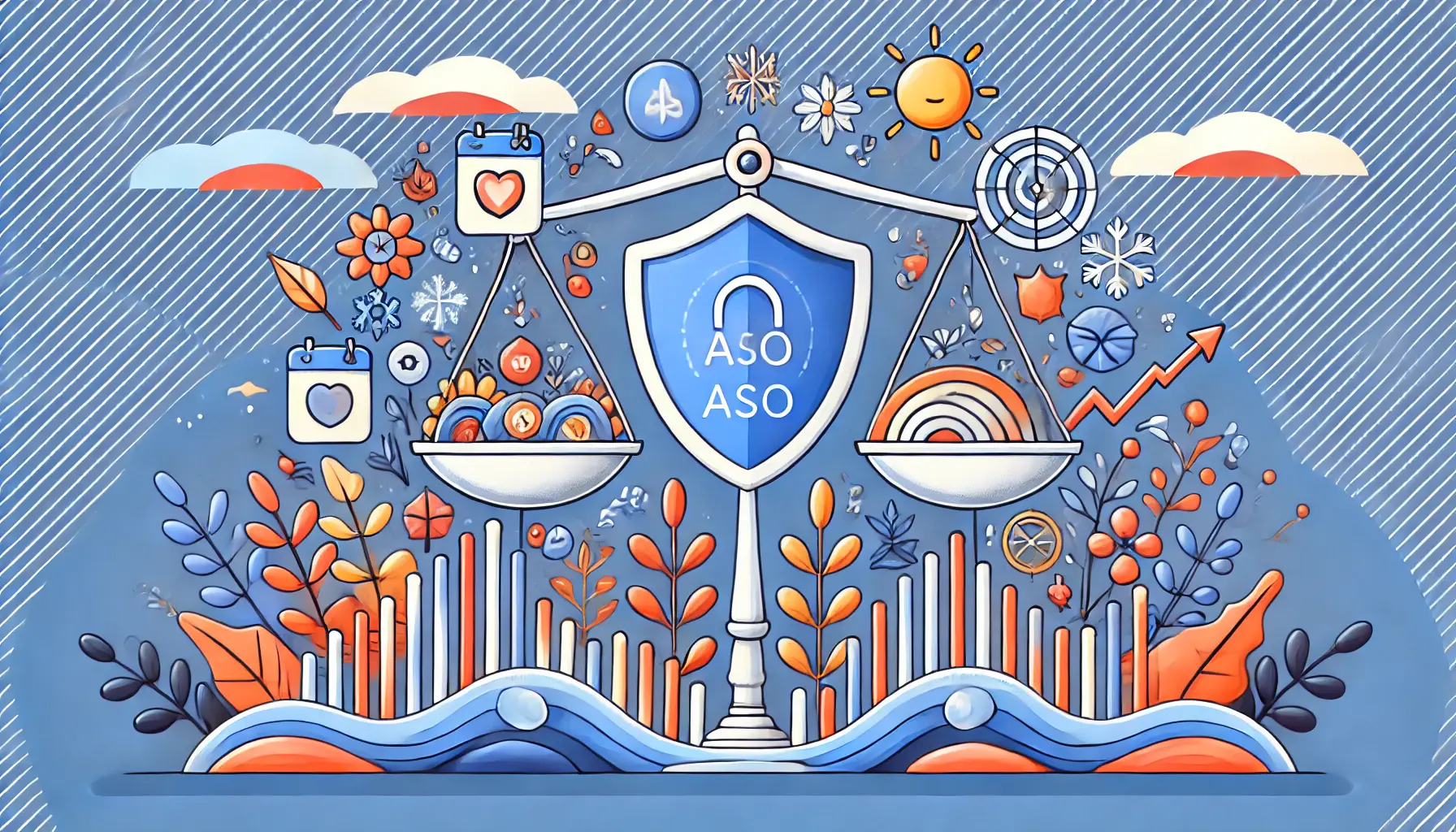
Illustration of maintaining stability in ASO performance despite seasonal fluctuations.
How To Guard Against Seasonal Fluctuations In Your ASO Strategy
Being visible during seasonal peaks—ideally by maximizing your visibility—is essential; equally important is preparing for the seasons when things start slowing down.
By making this adjustment, you can secure the success of your app year-round and ensure it stays ahead of the competition in a highly competitive environment, not just during peak seasons but also at off-peak times.

Illustration of strategic planning and preparation during off-peak periods in ASO.
Preparing for an Off-Peak Period
Off-peak periods can be challenging, but they represent times when you can work efficiently—strengthening the foundation of your app and preparing for the next wave of traffic.

Illustration of making the most of slower periods by focusing on improvements and strategic actions in ASO.
3 Ways to Capitalize on the Quiet Moments
- Retention is Key: Use your off-peak times to focus on retaining the users you acquired during seasonal peaks. Convince them to return with new content, features, or tailor-made discounts.
- User Experience Optimization: Utilize this time to work on improving the user experience (UX) of your app. Troubleshoot any issues and streamline navigation to enhance usability. These smaller changes can lead to better reviews and higher retention.
- Try Different Tactics: Off-peak periods offer more flexibility to experiment with new ASO tactics without the pressure of high competition. Try different keywords, visuals, or promotion strategies to see what resonates best with your audience.

Illustration of establishing a stable, enduring ASO strategy that performs well year-round.
Building A Strong, Year-Round ASO Strategy
Developing an ASO strategy that works year-round ensures you don’t have to reinvent the game every holiday season.
Here’s how to build a robust ASO strategy that performs consistently throughout the year:
- Keep it Updated: Regularly update your app with new features, content, or bug fixes. Keeping your app fresh shows users and app stores that your app is actively maintained, which fosters trust and improves rankings.
- Regular Keyword Optimization: Keyword trends change over time, so it’s important to regularly reshuffle your keywords to maintain optimal results. Stay on top of trends and adapt your keyword strategy to retain visibility for your app.
- Regular User Interactions: Engage with your users consistently, not just during peak seasons. Use push notifications, email campaigns, and social media to maintain year-round relationships with your users.

Illustration of using automation tools to enhance and streamline ASO strategies.
Leveraging Automation to Optimize ASO
A robust, continuous ASO strategy can benefit greatly from the power of automation.
By incorporating automation, you can ensure your app remains optimized without requiring constant manual intervention.
- Automated A/B Testing: Leverage automation tools to run multiple rounds of A/B tests on different store features such as screenshots, icons, and descriptions. This allows you to identify the most successful versions without manually monitoring and analyzing the data.
- Keyword Monitoring Tools: Use automated keyword monitoring tools to track the performance of your keywords in real-time. These tools can alert you to changes in keyword rankings, allowing for immediate responses to maintain your app’s visibility.
- Automatic Updates: Schedule and roll out app updates automatically at optimal times. This ensures your app remains up-to-date, freeing you to focus on other strategic tasks.
If you take the time to prepare for off-peak times, build a year-round ASO strategy, and automate your workflow, then both the Halloween season and future seasonal fluctuations in user behavior need not negatively impact the success of your app.
This approach ensures your app not only survives the high-volume seasons but also performs well 365 days a year.
Preparing for off-peak periods is as important as capitalizing on seasonal peaks.
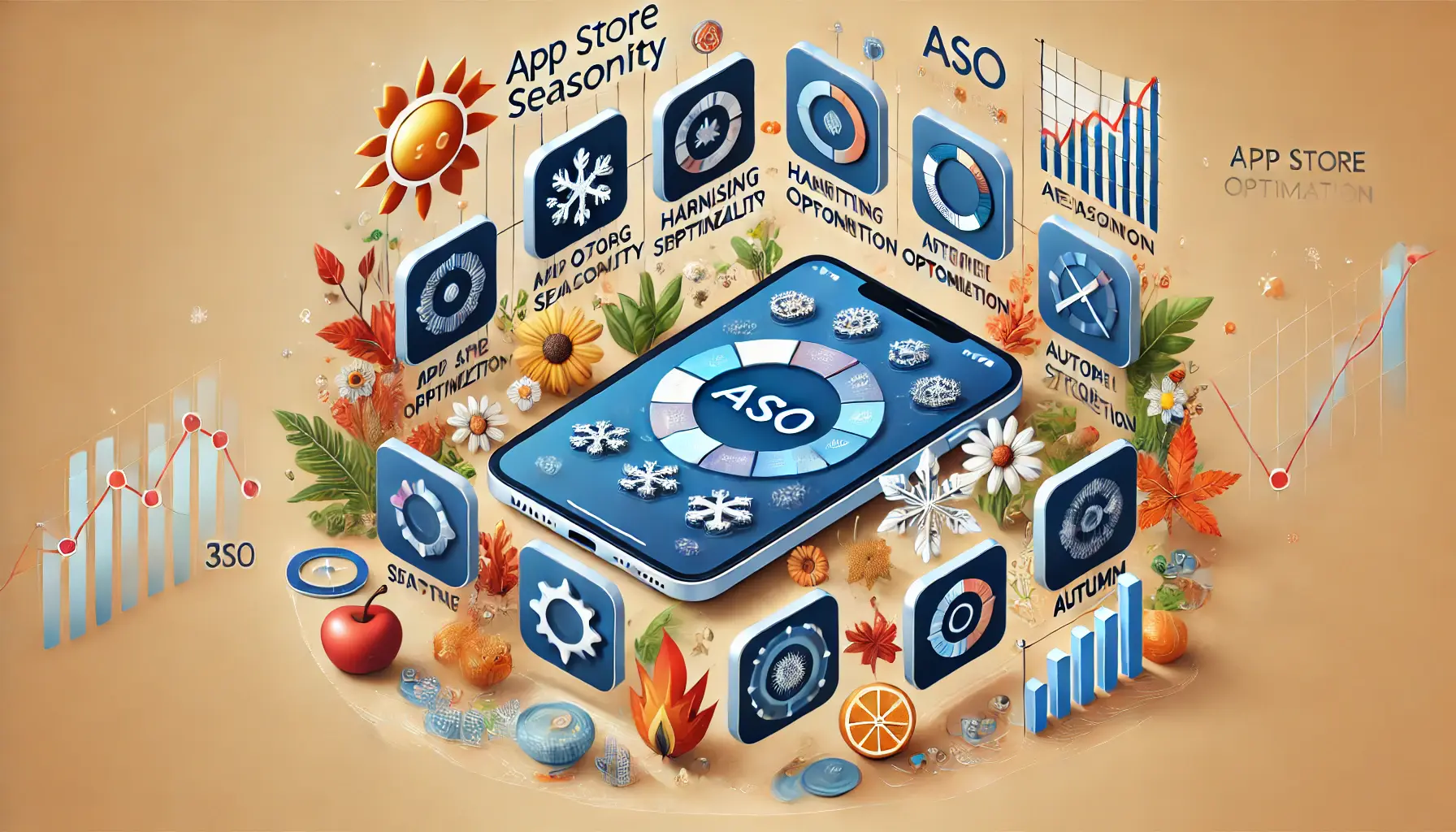
Illustration of strategically aligning ASO efforts with seasonal trends for optimal success.
Bottom Line: Harnessing App Store Seasonality for Optimal ASO Success
When it comes to App Store Optimization (ASO), understanding and harnessing seasonality is crucial.
By aligning your ASO efforts with seasonal trends, you can achieve high visibility and performance during peak times and sustain that success throughout the year.
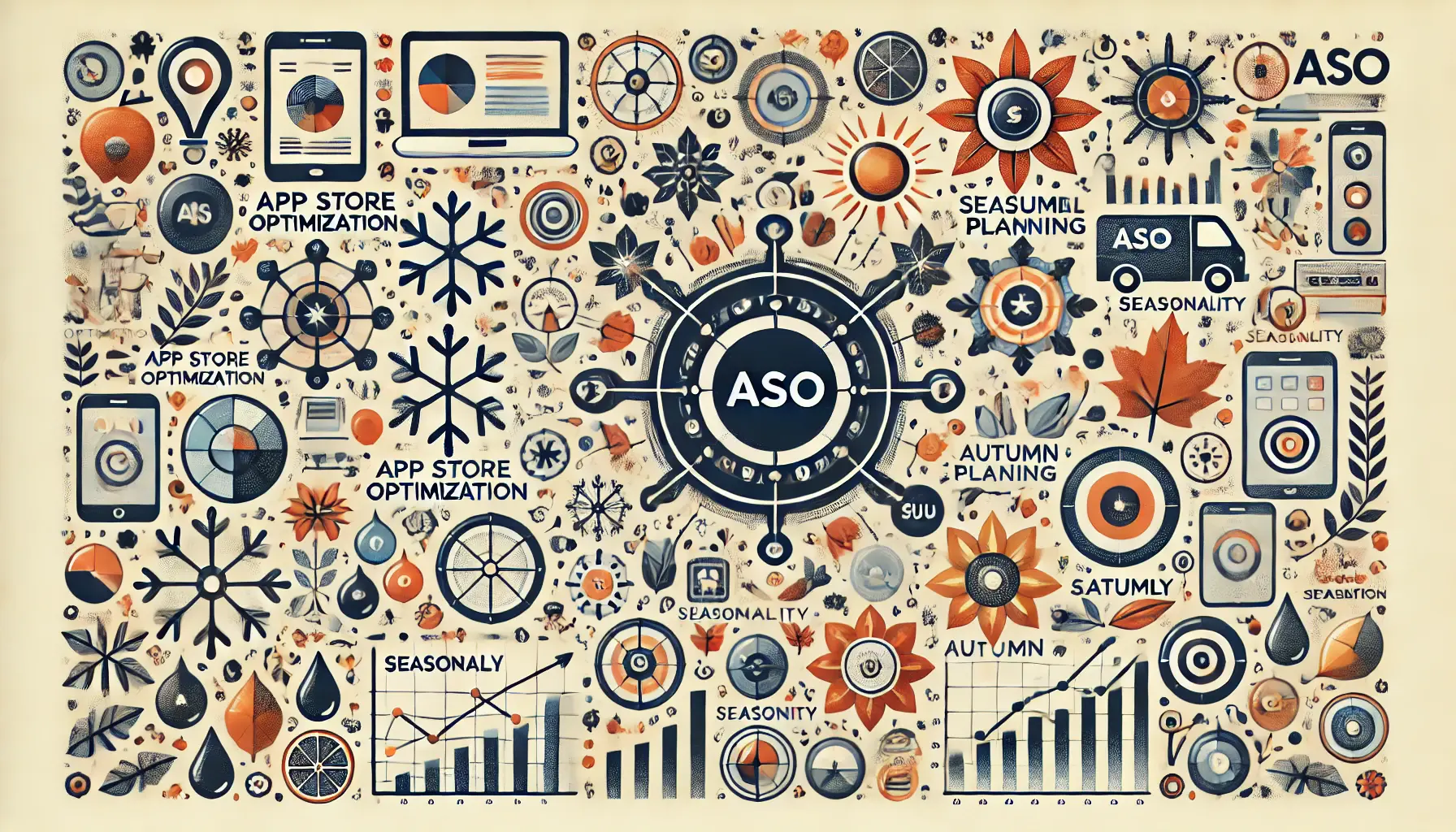
Illustration summarizing the main concepts of ASO and seasonality from the article.
Key Points from the Article
- Understand Seasonal Variations: Recognize when there are changes in app traffic and adjust your ASO strategy to accommodate them. Knowing these patterns helps you predict when your app will gain visibility, whether due to holiday spikes or summer lulls.
- Timing Your ASO Strategy: Optimize keywords, visuals, and app descriptions according to seasonal trends. By preparing in advance for peak seasons, your app’s performance can improve significantly.
- Leverage Historical Data: Use historical data to forecast seasonal trends and plan your ASO strategy. Analyzing past performance and user behavior helps in predicting future trends, allowing for more effective ASO efforts.
- Brace Yourself for Off-Peak Times: Take advantage of quieter periods to focus on user retention, UX/UI improvements, and testing new ASO tactics. A balanced approach keeps your app competitive across all seasons.
- Optimize Listings & Engagement: Run A/B tests on your app store listings to experiment with seasonal visuals and keywords during peak seasons. With increased traffic, leverage promotional campaigns and interact with users via notifications to boost engagement.
With these strategies in place, you can successfully navigate the nuanced landscape of seasonality and ensure your app gets the visibility it deserves.
ASO is a time-bound activity, and continuous optimization is the key to maintaining dominance in your app category.
Aligning ASO efforts with seasonal trends is key to maintaining app visibility year-round.
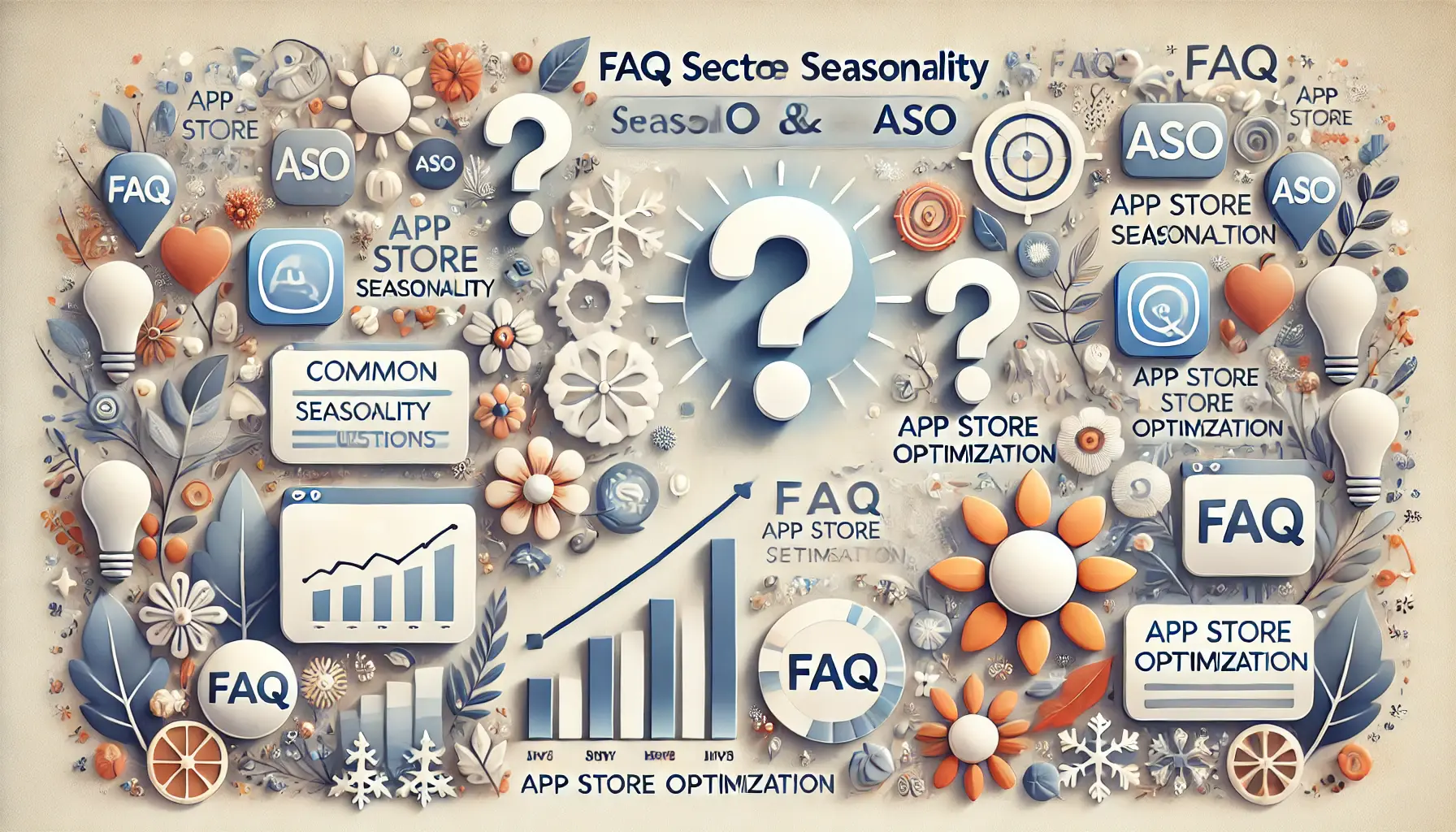
Illustration addressing common inquiries related to ASO and seasonality.
Boost your mobile app's success with our guaranteed App Store Optimization (ASO) service. Leave it to the experts!
App Store Seasonality and ASO FAQ
Below, you can find the most common questions about App Store seasonality and how to adapt your ASO strategy.
When we talk about App Store seasonality, we’re referring to the expected fluctuations in app store traffic and user activity that happen at different times of year — holidays, for example!
Since seasonality influences the timing and impact of keywords, app visuals, and promotional strategies in ASO, you need to coordinate your ASO efforts with seasonal trends.
You should start preparing your ASO strategy a few weeks before the peak season to anticipate an expected surge in sessions and ensure your app is ready.
During off-peak times, focus on user retention, improving the user experience, and experimenting with different ASO tactics like updating keywords or running visual tests.
Use historical data to predict seasonal trends, evaluate past performance, and analyze user behavior in the App Store.
This allows you to plan your ASO strategy more effectively.
Updating app visuals for seasonal peaks helps your app feel relevant to users during specific times of the year, increasing engagement and improving download rates.
Seasonal keywords are search terms that are particularly relevant during specific times of the year.
Strategically use them in your app title, subtitle, and keyword list to improve visibility during peak periods.










